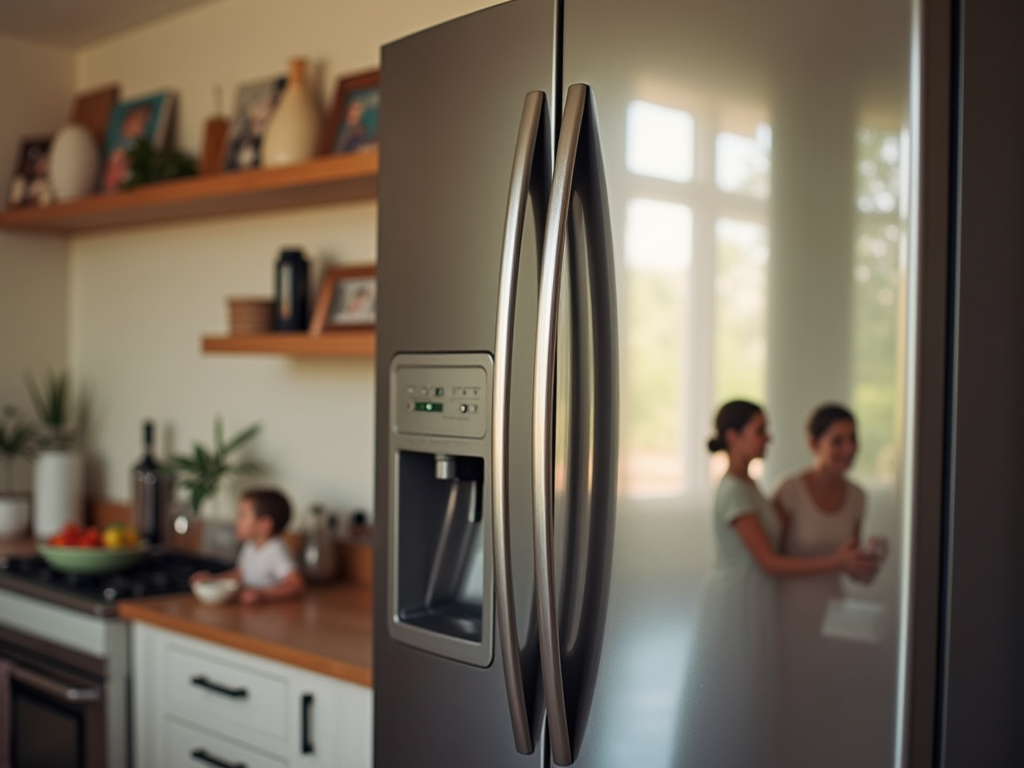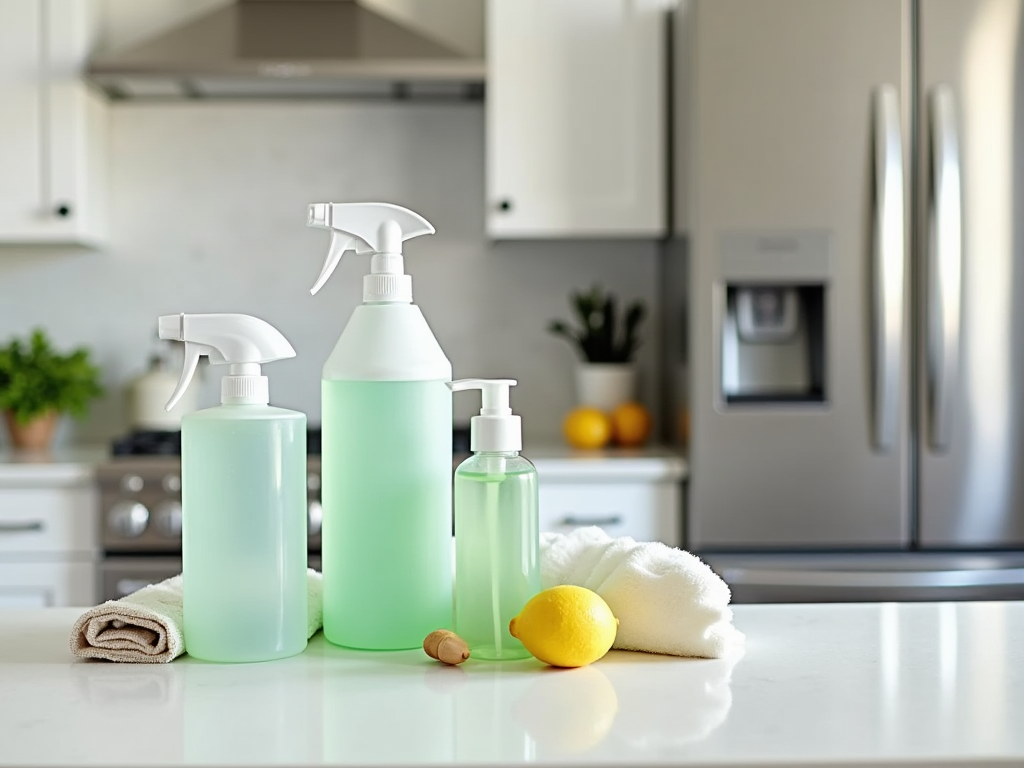How to Clean Stainless Steel Appliances
Stainless steel appliances are a hallmark of modern kitchens, exuding elegance and functionality. Their sleek appearance can elevate the overall aesthetic of any culinary space. However, maintaining that pristine look requires more than the occasional wipe-down. It’s a blend of proper technique, right products, and a bit of know-how. Emphasizing regularity in upkeep, the journey towards spotless stainless steel begins not just with a simple cleaning; it involves understanding the nuances of the material itself. With the right approach, your stainless steel appliances can shine like they did on the day they were installed.
Understanding Stainless Steel Appliances

Stainless steel is primarily an iron alloy, combined with chromium, which gives it a distinct, shiny finish. This combination makes it resistant to rust and stains, a significant advantage in kitchens that encounter moisture and spills daily. However, the surface can easily show fingerprints, smudges, and streaks if it’s not cleaned properly. To appreciate its durability, one must also comprehend that stainless steel is not invincible. Using the wrong cleaning products or techniques can lead to scratches and dullness. Hence, adopting a tailored approach to cleaning is crucial for preserving its elegance.
Why Cleaning Stainless Steel is Important

Regular cleaning of stainless steel appliances is critical for maintaining their charm and functionality. Over time, grease, dust, and fingerprints can accumulate, detracting from the appliance’s overall appearance. Beyond aesthetics, a well-maintained appliance operates more efficiently, as grime can affect performance. Extended neglect can lead to more severe issues, such as rust or discoloration. Thus, it’s not merely about keeping a fresh look; it’s a pivotal part of appliance maintenance that ensures longevity and efficiency in the kitchen.
Best Practices for Cleaning Stainless Steel Appliances
To maintain the lustrous finish, employing the right techniques and materials is essential. The first step is selecting the appropriate cleaning supplies that won’t damage the surface. Here are some tips:
- Use soft cloths or microfiber towels to avoid scratches.
- Opt for non-abrasive cleaners specifically designed for stainless steel.
- Stick with natural cleaning solutions, as they are less likely to contain harmful chemicals.
Choosing the Right Cleaning Supplies
Choosing the right tools can significantly affect your cleaning results. For example, a rough sponge can introduce scratches, diminishing the beauty of your appliances. Here’s a list of recommended supplies:
- Microfiber cloths for wiping.
- Spray bottle for homemade cleaners.
- Non-abrasive stainless steel cleaner.
Homemade Cleaning Solutions
If you prefer to steer clear of commercial products, several homemade solutions are just as effective. A mixture of vinegar and water effectively cuts through grease and fingerprints. Olive oil can restore shine and create a protective barrier. Another option is baking soda mixed with water, which can eliminate tougher stains. Here’s a quick table summarizing these solutions:
| Cleaner Type | Ingredients | Usage |
|---|---|---|
| Vinegar Solution | 1 part vinegar, 1 part water | Wipe down surfaces to remove fingerprints. |
| Olive Oil | Pure olive oil | Apply with a cloth to restore shine. |
| Baking Soda Paste | Baking soda and water | Apply to tough stains, scrub, then rinse. |
Step-by-Step Guide to Cleaning Your Stainless Steel Appliances
To ensure your appliances are cleaned effectively without damage, follow this step-by-step guide:
- Preparation: Gather your cleaning supplies and ensure the surface is cool.
- Initial Wipe: Use a damp microfiber cloth to wipe away loose dirt.
- Apply Cleaner: Use your chosen cleaner or solution, applying it in the direction of the grain.
- Rinse and Dry: Thoroughly rinse the surface with water and dry with a clean cloth to avoid streaks.
Tips for Maintaining Stainless Steel Appliances
A comprehensive cleaning routine is vital, but maintenance doesn’t end there. Cultivating consistent habits can prevent future problems. Here are additional maintenance tips:
- Set a regular cleaning schedule; aim to wipe down your appliances weekly.
- Avoid harsh chemicals like bleach or ammonia-based cleaners.
- Use the right cloths to prevent scratches, rotating them regularly.
Conclusion
Maintaining the shine and cleanliness of stainless steel appliances is a straightforward yet essential task that enhances the beauty and functionality of your kitchen. By integrating proper techniques and regular upkeep, your appliances will remain in pristine condition for years. Understanding the material, using the right products, and following a consistent cleaning regimen all contribute to that goal. Not only will your kitchen look impeccable, but your appliances will also perform at their best. Investing time in care translates to lasting value, making your stainless steel shine through every meal prep and gathering.
Frequently Asked Questions
- What household items can I use to clean stainless steel? You can use vinegar, baking soda, olive oil, or a mixture of dish soap and water.
- Is it safe to use steel wool on stainless steel appliances? No, steel wool can scratch and damage the surface of stainless steel.
- How often should I clean my stainless steel appliances? It’s recommended to clean them weekly to prevent buildup and maintain their shine.
- Can I use glass cleaner on stainless steel? While some glass cleaners can be used, they may contain ammonia, which can damage stainless steel. Always check the label first.
- What’s the best way to remove fingerprints from stainless steel? Apply a small amount of olive oil or a microfiber cloth with vinegar to the affected area and wipe in the direction of the grain.
